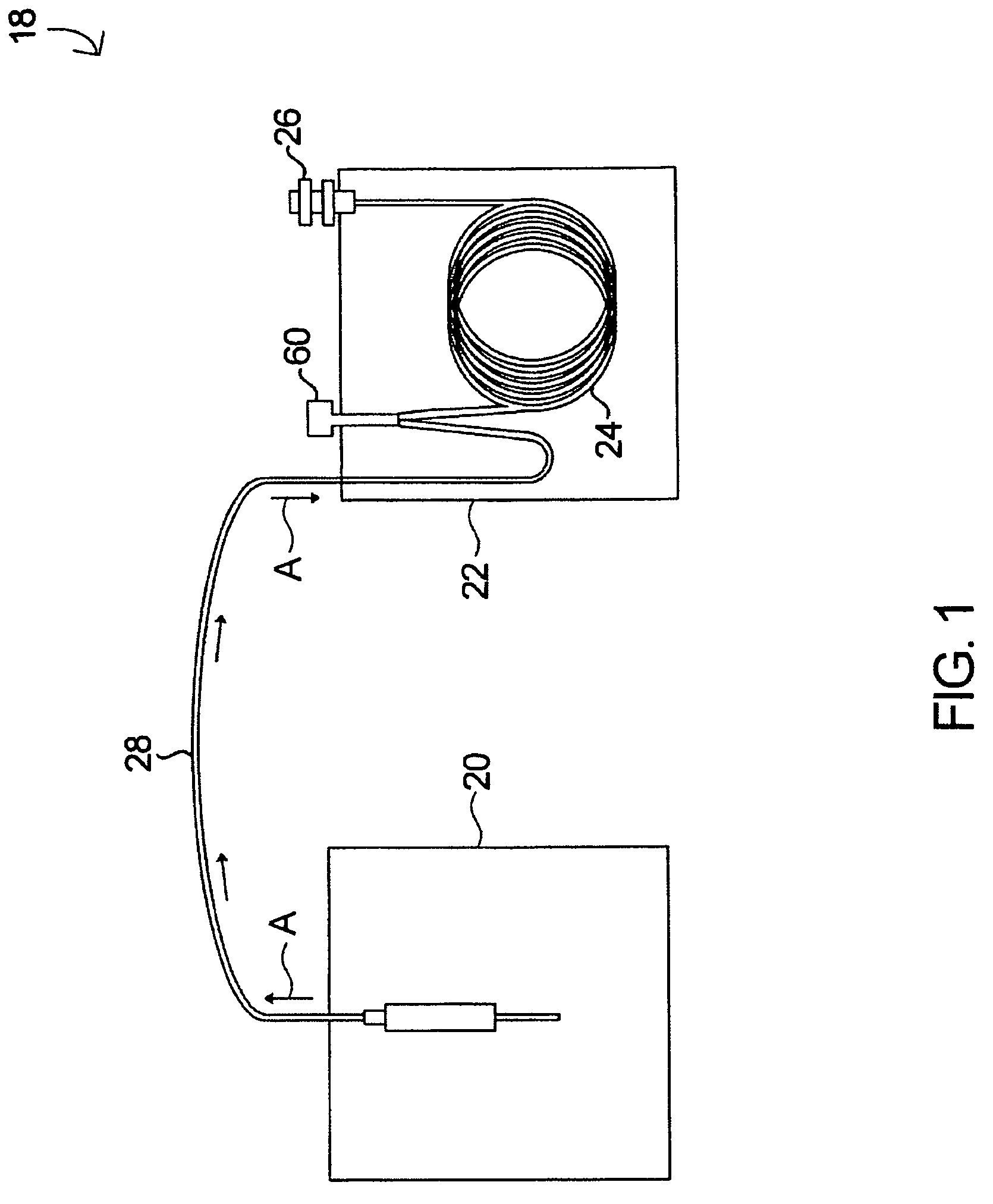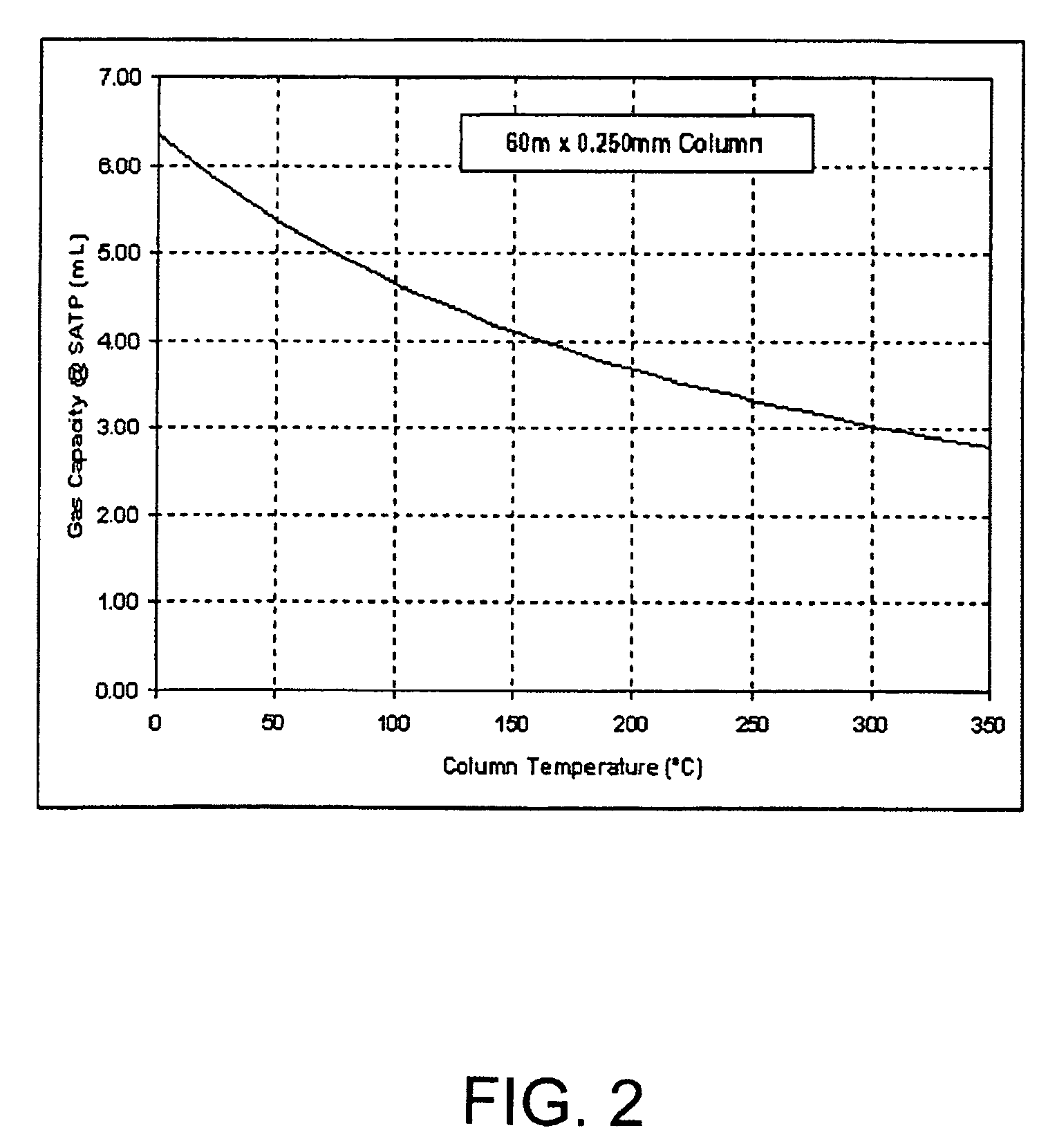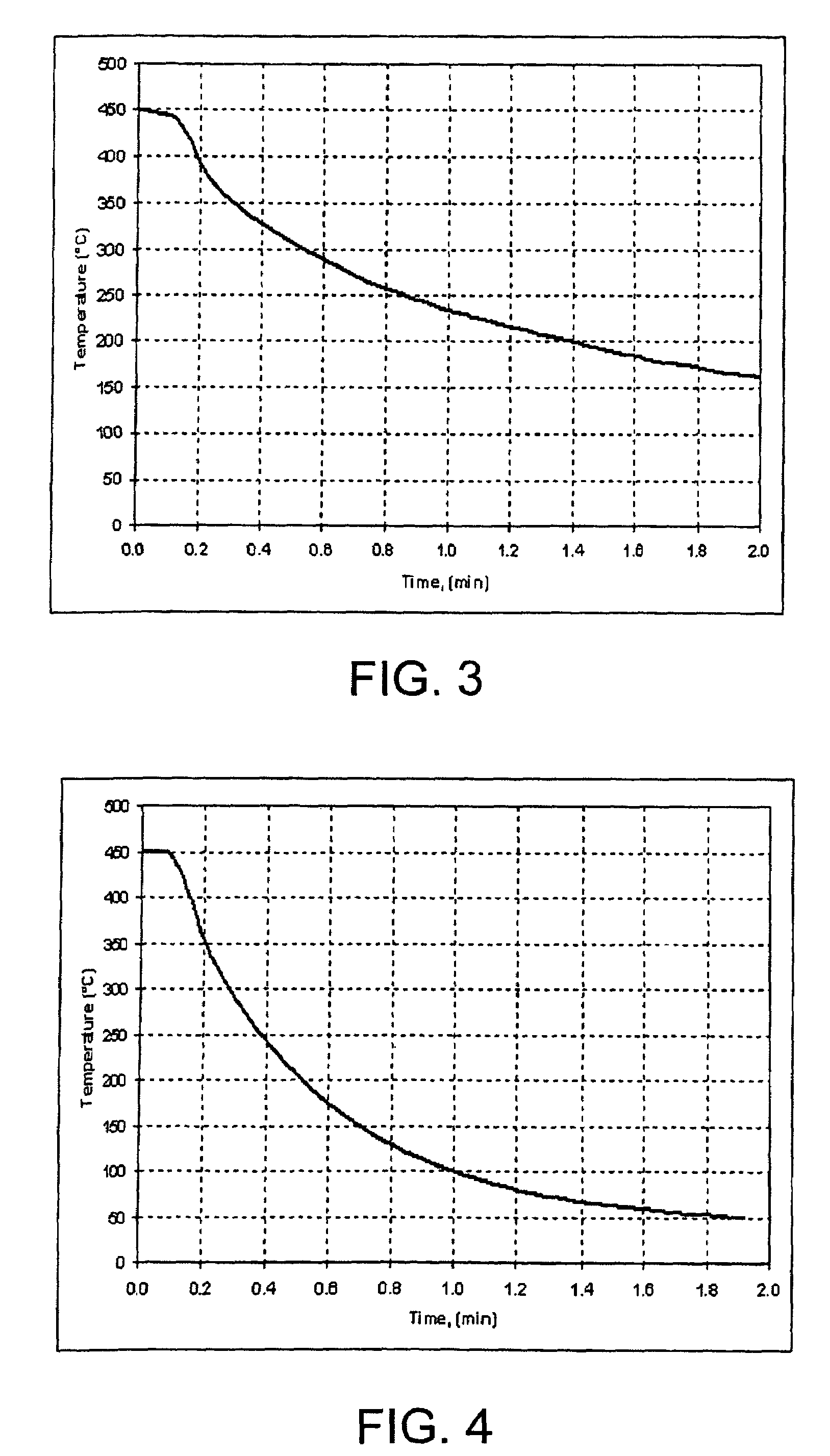Methods and systems for cooling a chromatographic column
a technology of chromatographic column and cooling system, which is applied in the direction of ion exchangers, separation processes, instruments, etc., can solve the problems of significant stationary phase bleed of columns, significant and unproductive portion of the total time needed to perform sequence analysis, and gas being hostile to columns, so as to reduce the effect of stationary phase bleed and rapid cooling of columns
- Summary
- Abstract
- Description
- Claims
- Application Information
AI Technical Summary
Benefits of technology
Problems solved by technology
Method used
Image
Examples
Embodiment Construction
[0035]The basic components of one embodiment of a system for preventing the ingress of detector gases into a chromatographic column in accordance with the invention are illustrated in FIG. 1. As used in the description, the terms “top,”“bottom,”“above,”“below,”“over,”“under,”“above,”“beneath,”“on top,”“underneath,”“up,”“down,”“upper,”“lower,”“front,”“rear,”“back,”“forward” and “backward” refer to the objects referenced when in the orientation illustrated in the drawings, which orientation is not necessary for achieving the objects of the invention.
[0036]The system 18 includes a sampling device 20, such as a thermal desorption unit or a headspace sampler, in which a sample vessel, such as a sorbent tube, is disposed. The system 18 also includes a chromatographic oven 22, which, in certain embodiments, is temperature-programmable. A chromatographic column 24 is at least partially disposed in the oven 22, and the outlet end of the column 24 is connected to a detector 26. The sampling d...
PUM
 Login to View More
Login to View More Abstract
Description
Claims
Application Information
 Login to View More
Login to View More - R&D
- Intellectual Property
- Life Sciences
- Materials
- Tech Scout
- Unparalleled Data Quality
- Higher Quality Content
- 60% Fewer Hallucinations
Browse by: Latest US Patents, China's latest patents, Technical Efficacy Thesaurus, Application Domain, Technology Topic, Popular Technical Reports.
© 2025 PatSnap. All rights reserved.Legal|Privacy policy|Modern Slavery Act Transparency Statement|Sitemap|About US| Contact US: help@patsnap.com



